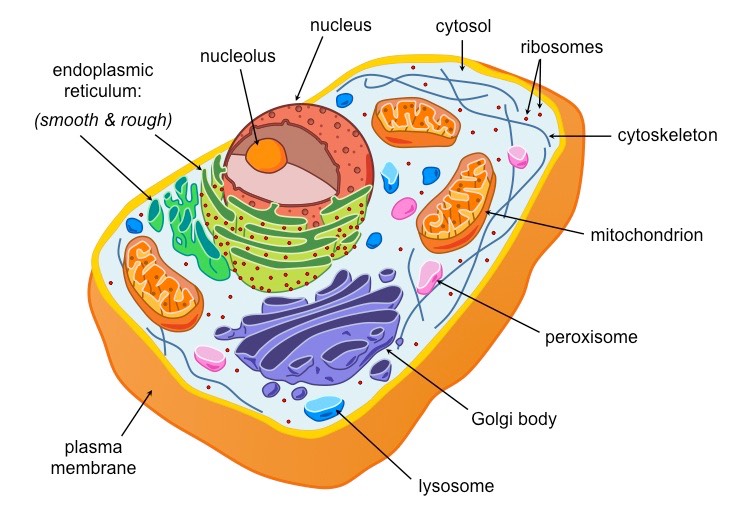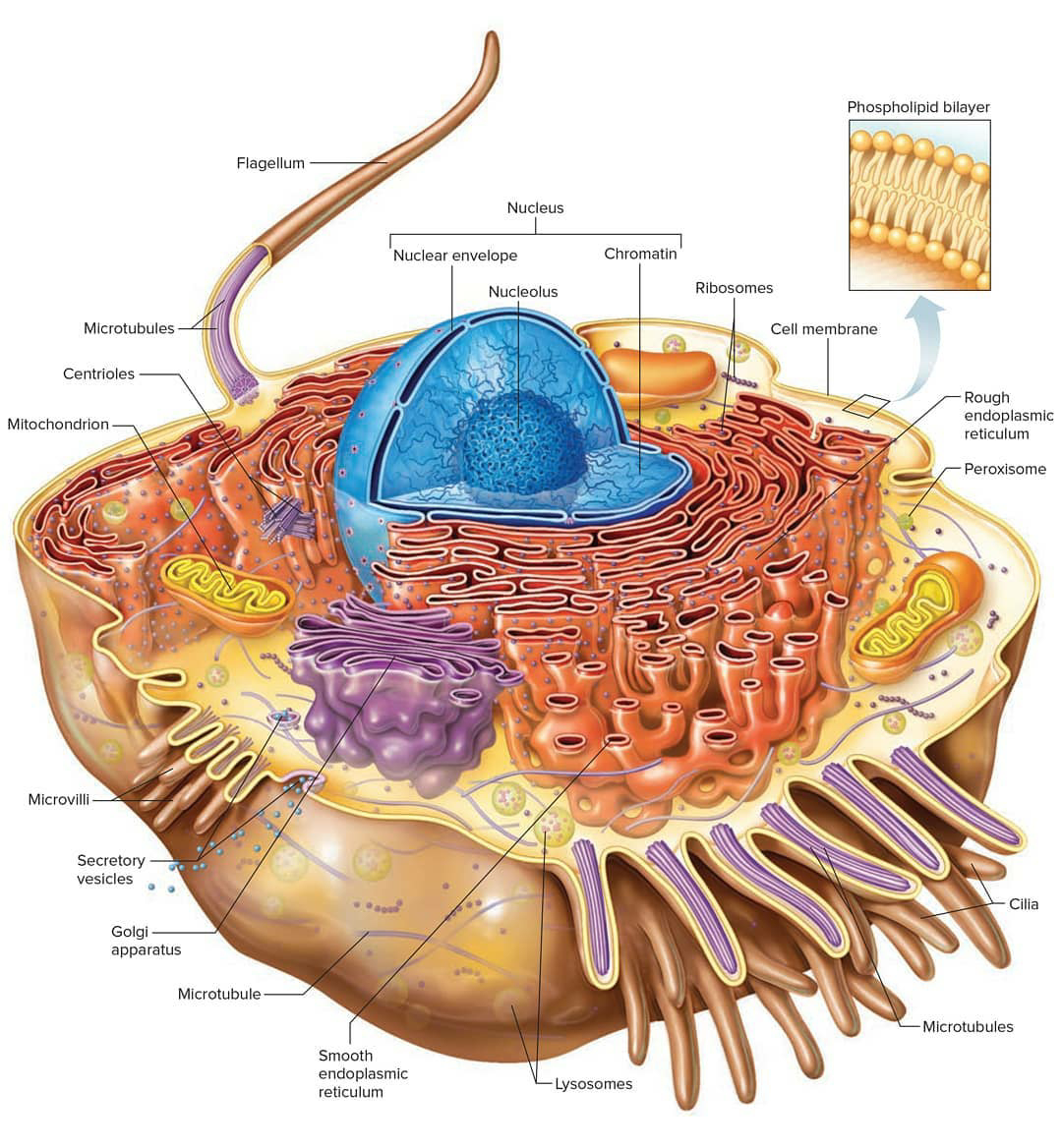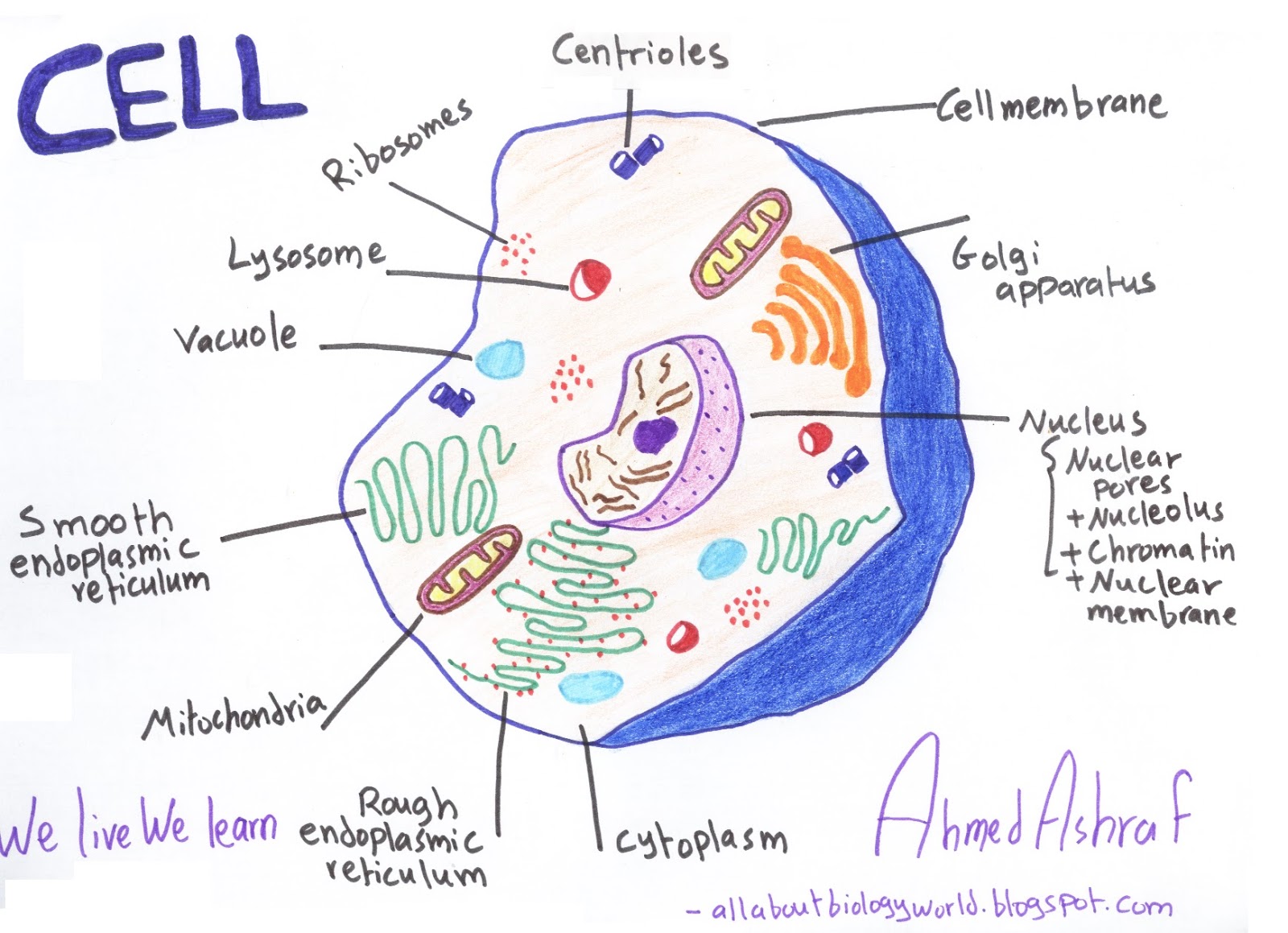
Anatomy Of A Model Cell mapasgmaes
A cell is the smallest living thing in the human organism, and all living structures in the human body are made of cells. There are hundreds of different types of cells in the human body, which vary in shape (e.g. round, flat, long and thin, short and thick) and size (e.g. small granule cells of the cerebellum in the brain (4 micrometers), up to the huge oocytes (eggs) produced in the female.

Cell Structure
Figure 6.4 Animal cell mitosis is divided into five stages—prophase, prometaphase, metaphase, anaphase, and telophase—visualized here by light microscopy with fluorescence. Mitosis is usually accompanied by cytokinesis, shown here by a transmission electron microscope. (credit "diagrams": modification of work by Mariana Ruiz Villareal; credit "mitosis micrographs": modification of work by.

anatomy of the cell
Animal cells are eukaryotic cells, meaning they possess a nucleus and other membrane-bound organelles. Unlike plant cells, animal cells do not have cell walls, allowing for more flexibility in shape and movement. A plasma membrane encloses the cell contents of both plant and animal cells, but it is the outer coating of an animal cell.

Characteristics Of Eukaryotic Cellular Structures ALevel Biology
Cell Parts ID Game. Test your knowledge by identifying the parts of the cell. Choose cell type (s): Animal Plant Fungus Bacterium. Choose difficulty: Beginner Advanced Expert. Choose to display: Part name Clue. Play.

Cell Biology, Cell Structure
A membrane-bound nucleus, a central cavity surrounded by membrane that houses the cell's genetic material. A number of membrane-bound organelles, compartments with specialized functions that float in the cytosol.

What is a cell? Facts
1. Plasma membrane (Cell membrane) 2. Nucleus 3. Cytoplasm 4. Mitochondria 5. Ribosomes 6. Endoplasmic Reticulum (ER) 7. Golgi apparatus (Golgi bodies/Golgi complex) 8. Lysosomes 9. Cytoskeleton Functions of Cytoskeleton 10. Microtubules 11. Centrioles 12. Peroxisomes 13. Cilia and Flagella

South Pontotoc Biology Plant and Animal Cell Diagrams
What exactly is its job? The plasma membrane not only defines the borders of the cell, but also allows the cell to interact with its environment in a controlled way. Cells must be able to exclude, take in, and excrete various substances, all in specific amounts.

Biology Club Our cells 1 ( structure, function, division, disorder
DNA is the genetic material of the cell. Ribosomes are molecular machines that synthesize proteins. Despite these similarities, prokaryotes and eukaryotes differ in a number of important ways. A prokaryote is a simple, single-celled organism that lacks a nucleus and membrane-bound organelles.

Biology 101 Cells Owlcation
Structure and Composition of the Cell Membrane. The cell membrane is an extremely pliable structure composed primarily of two layers of phospholipids (a "bilayer"). Cholesterol and various proteins are also embedded within the membrane giving the membrane a variety of functions described below.

Labelled Diagram Of Ribosomes
Animal Cell: Structure, Parts, Functions, Labeled Diagram June 6, 2023 by Faith Mokobi Edited By: Sagar Aryal An animal cell is a eukaryotic cell that lacks a cell wall, and it is enclosed by the plasma membrane. The cell organelles are enclosed by the plasma membrane including the cell nucleus.

Plant Cell Structure, Parts, Functions, Labeled Diagram
Unit 1 Intro to biology Unit 2 Chemistry of life Unit 3 Water, acids, and bases Unit 4 Properties of carbon Unit 5 Macromolecules Unit 6 Elements of life Unit 7 Energy and enzymes Unit 8 Structure of a cell Unit 9 More about cells Unit 10 Membranes and transport Unit 11 More about membranes Unit 12 Cellular respiration Unit 13 Photosynthesis

The animal cell diagram. Vector illustration on white Etsy in 2021
Cell Diagrams with Labelling Activity. I've created two interactive diagrams for an upcoming open textbook for high-school level biology. The cell structure illustrations for these diagrams were generated in BioRender. Both diagrams feature a drag-and-drop labelling activity created with H5P here on Learnful.

Figure 1.1. Eukaryotic Cell Numerous membranebound organelles are
Cell organelles are specialized entities present inside a particular type of cell that performs a specific function. There are various cell organelles, out of which, some are common in most types of cells like cell membranes, nucleus, and cytoplasm. However, some organelles are specific to one particular type of cell-like plastids and cell.

Cells
Label the cell parts you can distinguish. The movement of the cytoplasm is detected by the movement of the chloroplasts which are suspended in cytoplasm. The chloroplasts are carried along in the cytoplasm as if in a current. This movement is known as cyclosis or cytoplasmic streaming. With arrows, indicate the directions of streaming (cyclosis.

Microtubule Animal Cell
Cell diagram labeled Cell diagram unlabeled Learn faster with interactive cell quizzes Sources + Show all What are the parts of a cell? There exist two general classes of cells: Prokaryotic cells: Simple, self-sustaining cells (bacteria and archaea) Eukaryotic cells: Complex, non self-sustaining cells (found in animals, plants, algae and fungi)

Explain the nucleus of a cell with a neat labeled diagram Science
cell, in biology, the basic membrane-bound unit that contains the fundamental molecules of life and of which all living things are composed.A single cell is often a complete organism in itself, such as a bacterium or yeast.Other cells acquire specialized functions as they mature. These cells cooperate with other specialized cells and become the building blocks of large multicellular organisms.